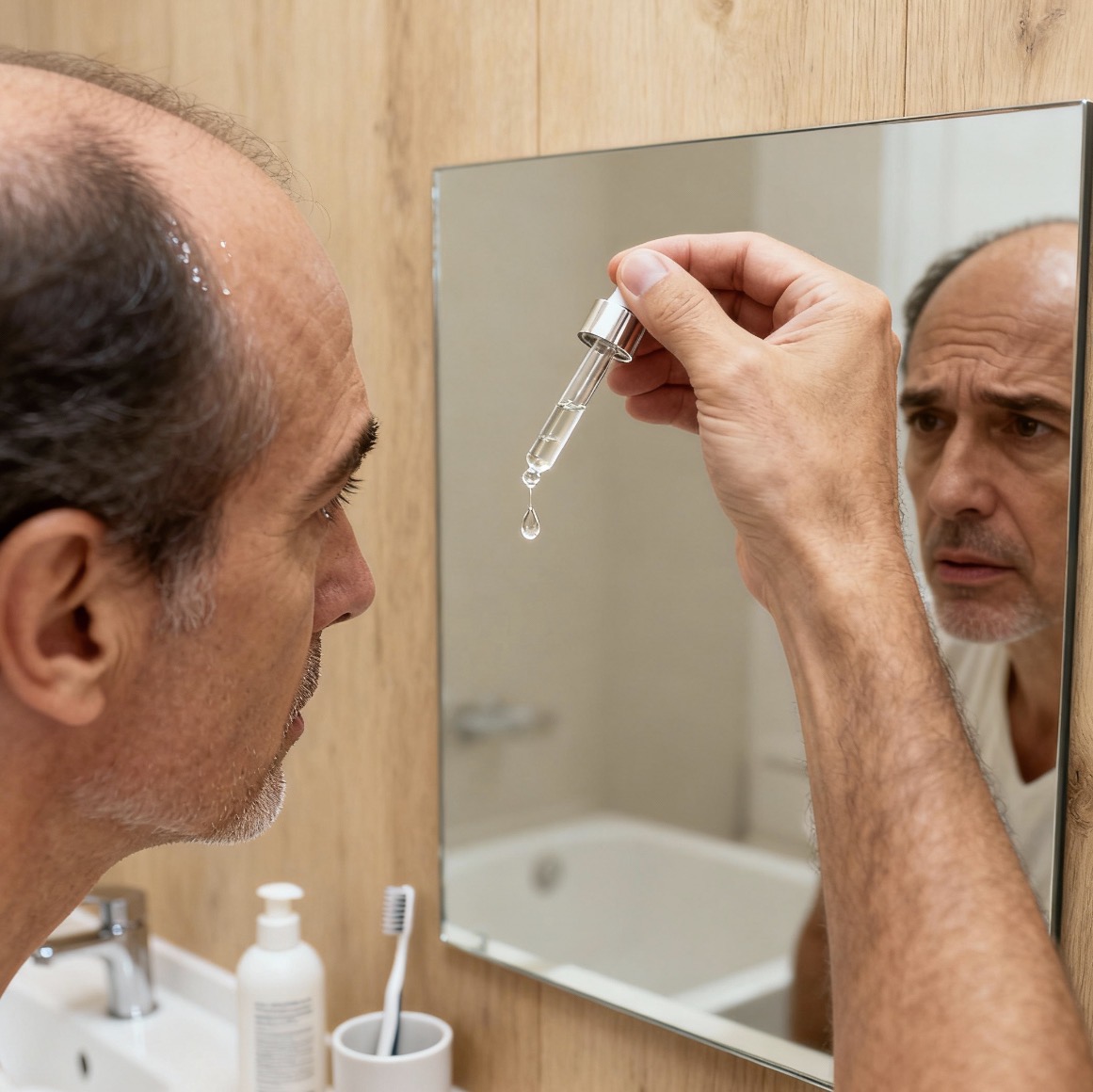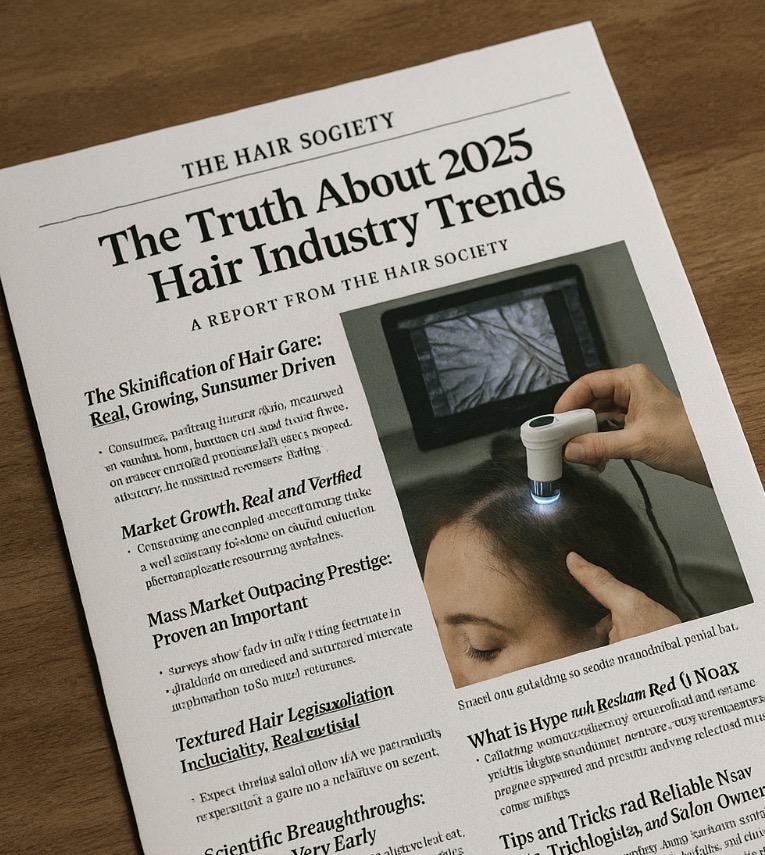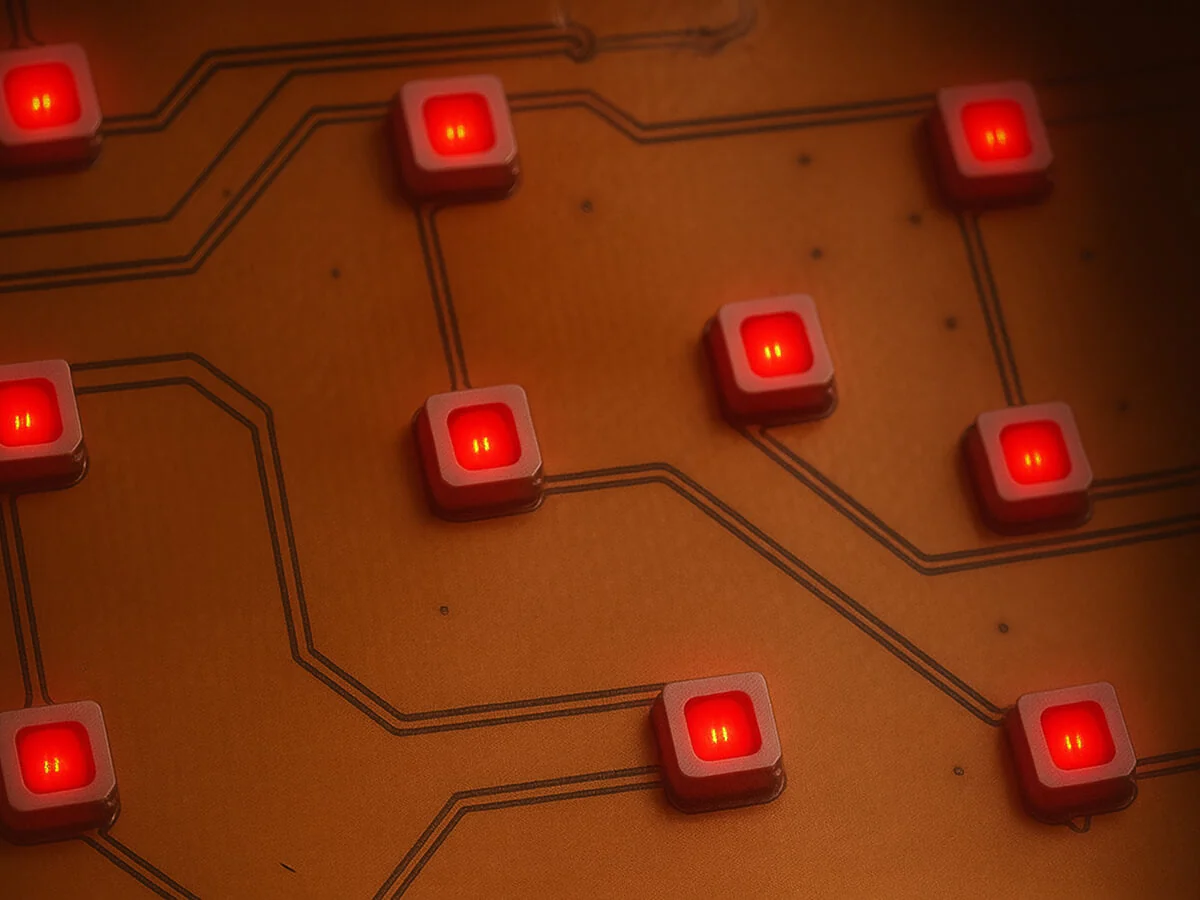Taiwan Hair Growth Breakthrough: Separating Science from Hype
Recent headlines claiming “baldness may soon vanish completely” thanks to a Taiwanese serum are based on legitimate scientific research, but the reality is far more nuanced than viral posts suggest. A team at National Taiwan University has indeed developed a promising treatment that regrew hair in mice within 20 days, but human applications remain years away, and significant limitations exist.
The Real Science Behind the Headlines
What Actually Happened
Researchers led by Professor Sung-Jan Lin at National Taiwan University published a peer-reviewed study in the journal Cell Metabolism on October 22, 2024, titled “Adipocyte lipolysis activates epithelial stem cells for hair regeneration through fatty acid metabolic signaling.” This is legitimate research from a reputable institution, not a fabricated story.
The Actual Discovery
The research team discovered that when skin is injured or irritated, immune cells called macrophages infiltrate the underlying fat tissue, triggering fat cells (adipocytes) to release specific monounsaturated fatty acids, primarily oleic acid (C18:1) and palmitoleic acid (C16:1). These fatty acids then activate dormant hair follicle stem cells, energizing them to produce new hair.
The researchers created a topical serum containing these fatty acids and applied it to shaved mice. In laboratory experiments, mice showed new hair sprouting in 10-11 days, with full coverage achieved in approximately 20 days.
The Scientific Mechanism
The process involves a “macrophage-to-adipocyte-to-hair follicle axis” where fatty acids fuel mitochondrial activity in hair follicle stem cells through a process called lipolysis, providing the energy needed for hair regeneration. This builds on the clinical observation that skin irritation sometimes causes hair to grow back thicker—a phenomenon that had been documented but never fully explained.
Fact vs. Fiction: Breaking Down the Claims
CLAIM: “Hair loss may soon vanish completely”
VERDICT: Highly Misleading
This statement vastly overstates the research. The study was conducted on mice, not humans, and has not yet entered human clinical trials. Even the lead researchers acknowledge significant caveats.
CLAIM: “Restore hair growth in just 20 days”
VERDICT: True in Mice, Uncertain in Humans
The 20-day timeline is accurate for mouse experiments where the serum was applied once daily. However, mice have much faster hair growth cycles than humans, and their physiology differs significantly from human scalps.
Critical Context: The natural human hair growth cycle takes months, not weeks. The anagen (growth) phase alone typically lasts 2-7 years. As one expert told Newsweek, “In humans, more than 90 percent of scalp hair follicles are in a growing phase, so the stimulation of resting hair follicles is not going to have a dramatic effect.”
CLAIM: “Activates dormant hair follicles”
VERDICT: Partially True with Important Limitations
The treatment is only effective on hair follicles in a resting (telogen) stage, waiting for the signal to grow again. On the human scalp, baldness typically shifts these stages hair by hair, making it more complex than simply shaving hair off as was done with mice.
Important Distinction: There’s a crucial difference between “dormant” follicles (which can potentially be reactivated) and “dead” follicles (which cannot). The research does not address whether truly miniaturized or dead follicles from advanced pattern baldness can be revived.
CLAIM: “Natural and safe fatty acids”
VERDICT: Promising but Unproven in Humans
The monounsaturated fatty acids used—oleic acid and palmitoleic acid, are naturally present in the human body and in plant oils like olive oil, suggesting a favorable safety profile. Professor Lin personally tested an early version on his own legs for three weeks and reported hair regrowth.
However, researchers acknowledged they need to determine effective dosing, concentration, formulation, and frequency of use before the treatment can be used for human hair loss management.
Expert Perspectives and Limitations
What Dermatologists Are Saying
Dr. Brendan Camp, a New York-based board-certified dermatologist, called the findings “notable” amid “intense interest” in hair loss research, but cautioned they are “very preliminary” and warned that “because the experiments were not performed on human scalp skin, the results may not be applicable to people.”
Dr. George Cotsarelis, professor and chair of the Department of Dermatology at the University of Pennsylvania, noted that while this connection between skin irritation and hair growth has been known for decades, the study “provides new details of how irritation and injury of fat cells triggers inflammation and stimulation of hair growth in mice.” However, he said he was “not certain this finding could have any implications for the treatment of human baldness.”
Dr. Mayumi Ito Suzuki, a professor of dermatology at NYU Langone, pointed out that “skin irritation broadly affects other cell types beyond adipocytes and hair follicle stem cells. Long-term effects on other cell types, including fibroblasts, and on innervations and vascularization would need to be considered before considering inducing skin irritation for human applications.”
The Translation Challenge
Several major caveats remain: First, the 20-day regrowth has been achieved only in mice, whose hair growth cycle is much faster and whose physiology differs from human scalps. Second, no large-scale, randomized human clinical trials have been published.
Another study suggests that fatty acids can also damage hair follicle stem cells during fasting, indicating the mechanism is more complex than initially appears.
Understanding the Global Hair Loss Crisis
The Scale of the Problem
Hair loss affects hundreds of millions worldwide, making any breakthrough potentially life-changing:
- Approximately 85% of men and 33% of women will face hair loss at some point in their lives
- Around 95% of male hair loss cases are caused by androgenetic alopecia (male pattern baldness)
- By age 35, roughly two-thirds of American men will have experienced some degree of hair loss, rising to 85% by age 50
- The United States has the fourth-highest percentage of bald men globally at 42.68%, after Spain, Italy, and France
- About 80 million men and women in the USA have hereditary hair loss
The Economic Impact
The global alopecia market was estimated at $9.1 billion in 2023 and is projected to reach $24.7 billion by 2033. Around 800,000 individuals with hair loss seek professional help each year.
The Psychological Toll
Research shows that 43% of men worry about losing an attractive personality after hair loss, while 21% report feeling depressed. The emotional impact extends beyond aesthetics, hair loss affects self-esteem, professional confidence, and mental health.
Current Treatment Landscape
FDA-Approved Options
Currently, only two medications have FDA approval for treating androgenetic alopecia:
Minoxidil (Rogaine):
- Available over-the-counter in 2% and 5% concentrations
- Approximately 56.8% of survey respondents reported using 5% minoxidil foam
- Requires continuous use; hair loss typically resumes if stopped
- Takes 3-6 months to show results
- Side effects may include scalp irritation and unwanted facial hair growth
Finasteride (Propecia):
- Prescription oral medication taken daily
- About 66.4% of respondents reported using finasteride 1mg to treat hair loss
- Works by blocking conversion of testosterone to DHT (dihydrotestosterone)
- Can cause sexual side effects in some users
- Prescription rates dropped to 10-20% of previous levels following 2011 reports of Post-Finasteride Syndrome
Surgical Options
Hair Transplantation:
- More than 40% of people choose hair transplants when their loss reaches stage 4 on the Hamilton-Norwood scale, which is quite advanced
- Expensive (costs vary widely by country and extent)
- Painful recovery period
- Not always permanent, surrounding hair can continue to thin
- Redistributes existing hair rather than creating new follicles
Emerging Treatments
- Platelet-Rich Plasma (PRP): Injections showing modest results
- Low-Level Laser Therapy: FDA-cleared devices with some evidence of effectiveness
- JAK Inhibitors: Showing promise for alopecia areata specifically
What Makes This Research Different?
A Novel Approach
Current treatments like minoxidil and finasteride target blood flow or hormonal pathways and require long-term use with varying effectiveness. The NTU serum represents a novel approach: metabolic signaling via fatty acids to awaken follicles rather than just preventing hair loss or mildly stimulating existing follicles.
Natural Components
Because the fatty acids are naturally occurring in the body and in plant oils (oleic acid in olive oil, palmitoleic acid in some nuts and oils), the prospects for safety are more favorable, although not yet proven in humans.
Potential Advantages
If proven effective in humans, this approach could:
- Avoid the hormonal manipulation of finasteride
- Provide a more natural alternative to synthetic drugs
- Potentially work through a different mechanism than existing treatments
- Be available as a topical over-the-counter product
The Path Forward: What Needs to Happen
Human Clinical Trials
The research team has patented the formula and is preparing to test different concentrations on the human scalp. The next critical steps include human scalp trials, determining the proper formulation, dosage, safety, and efficacy in real-world hair loss conditions.
Key Questions Requiring Answers
- Efficacy in Humans: Will the same fatty acid mechanism work on human scalps?
- Appropriate Dosing: What concentration and application frequency produces optimal results?
- Long-term Safety: Are there any adverse effects from prolonged use?
- Specific Conditions: Which types of hair loss respond best? (androgenetic alopecia vs. alopecia areata vs. others)
- Duration of Effect: Is the regrowth temporary or sustained?
- Combination Therapy: Does it work better when combined with existing treatments?
Realistic Timeline
Based on typical drug development processes:
- Phase I Trials (Safety): 1-2 years
- Phase II Trials (Efficacy): 2-3 years
- Phase III Trials (Large-scale confirmation): 3-4 years
- Regulatory Review: 1-2 years
- Total Timeline: Approximately 7-12 years from current stage to market availability
Even with accelerated pathways for a topical cosmetic product, widespread availability is likely 3-5 years away at minimum.
Red Flags in Viral Claims
The original post exhibits several characteristics of health misinformation:
- Sensational Language: “Baldness may soon vanish completely” and “powerful serum”
- Unrealistic Timelines: “Just 20 days” without acknowledging mouse vs. human differences
- Universal Solution Claim: Suggests it works for all types of hair loss
- Lack of Source Specifics: No citation of the actual study or researchers
- Premature Marketing Tone: Sounds like product advertising rather than scientific reporting
- Omission of Limitations: Fails to mention it’s only been tested in mice
- Absolute Statements: “May no longer require surgeries, implants, or lifelong medications”
What You Should Do Now
If You’re Experiencing Hair Loss
- See a Qualified Professional: Consult a board-certified dermatologist or trichologist for proper diagnosis
- Determine the Cause: Different types of hair loss (genetic, autoimmune, nutritional, stress-related) require different approaches
- Consider Proven Treatments: FDA-approved options like minoxidil and finasteride have decades of safety data
- Act Early: Hair loss treatments work best when started early, before significant miniaturization occurs
- Be Patient: Even effective treatments take 3-6 months to show results
Regarding This Research
DO:
- Stay informed about legitimate scientific developments
- Watch for published human clinical trial results
- Maintain realistic expectations about timelines
DON’T:
- Rush to buy unproven products claiming to use this research
- Apply olive oil or other fatty acids to your scalp expecting miracle results (the serum formulation is specific)
- Delay proven treatments while waiting for experimental options
- Fall for products claiming to be “based on the Taiwan study” without clinical evidence
Broader Context: The State of Hair Regeneration Research
Other Promising Avenues
The Taiwan fatty acid research is just one of several exciting developments in hair restoration science:
Stem Cell Therapies: Multiple research groups are exploring how to create new hair follicles from stem cells
Cloning Technology: Scientists are working on methods to multiply existing follicles
3D Bioprinting: Experimental techniques to print new hair follicles
Gene Therapy: Targeting the genetic causes of pattern baldness
Growth Factor Treatments: Using naturally occurring proteins to stimulate follicles
Why Mouse Studies Don’t Always Translate
History is filled with treatments that worked brilliantly in mice but failed in humans:
- Different Biology: Mouse skin and hair cycles differ substantially from humans
- Simplified Conditions: Laboratory mice are genetically uniform and live in controlled environments
- Shaving vs. Baldness: Regrowing shaved hair is fundamentally different from reversing pattern baldness
- Immune System Differences: Mice and humans respond differently to inflammatory signals
Approximately 90% of drugs that show promise in animal studies fail when tested in humans.
The Bigger Picture: Why We Should Care
Scientific Progress Is Real
Despite the necessary caution about translating mouse studies to humans, this research represents genuine scientific progress. Understanding the biological mechanisms of hair regeneration brings us closer to effective treatments.
The Researchers Are Credible
The study was conducted by legitimate scientists at a respected university, published in a prestigious peer-reviewed journal (Cell Metabolism), and follows rigorous scientific methodology. This isn’t pseudoscience, it’s real research that needs time to mature.
Hope Is Valuable, But So Is Realism
For the millions experiencing hair loss, hope matters. This research provides legitimate reasons for optimism about future treatments. However, false hope leading to delayed treatment or wasted money on unproven products helps no one.
Conclusion: The Truth About the Taiwan Hair Serum
What We Know:
- Scientists at National Taiwan University have discovered a mechanism by which fatty acids can stimulate hair regrowth in mice
- The mechanism involves natural compounds already present in the human body
- The research is published in a legitimate peer-reviewed journal
- The team has patented the formula and plans human trials
- Initial results in mice are genuinely impressive
What We Don’t Know:
- Whether the same effect will occur in humans
- The appropriate dosing and formulation for human use
- Long-term safety in humans
- Which types of hair loss it might treat effectively
- How long any regrowth might last
- When or if it will become commercially available
The Bottom Line:
This research offers genuine promise for future hair loss treatments, but claims that “baldness may soon vanish completely” are premature. The 20-day timeline reflects mouse experiments, not human applications. While the natural fatty acid approach is innovative and the early science is sound, we remain years away from knowing whether this will help humans experiencing hair loss.
Anyone experiencing hair loss should continue with proven treatments rather than waiting for experimental options. The most important step is early intervention with existing FDA-approved therapies, which have helped millions manage their hair loss.
This is exciting science, but it’s still science in progress. Real breakthroughs require patience, rigorous testing, and honest assessment of limitations. The Taiwan research deserves attention and continued study, but it doesn’t yet justify abandoning established treatments or making dramatic claims about the end of baldness.
Sources for Further Reading
Original Research:
- Tai, K.-Y., et al. (2024). “Adipocyte lipolysis activates epithelial stem cells for hair regeneration through fatty acid metabolic signaling.” Cell Metabolism, DOI: 10.1016/j.cmet.2025.09.012
Expert Commentary:
- Fox News interview with Dr. Sung-Jan Lin, lead researcher
- Newsweek coverage including expert opinions from Dr. George Cotsarelis and Dr. Mayumi Ito Suzuki
- Board-certified dermatologist Dr. Brendan Camp’s analysis
Statistical Context:
- American Hair Loss Association data on prevalence
- Grand View Research alopecia market analysis
- International Society of Hair Restoration Surgery reports
Regulatory Information:
- FDA information on approved hair loss treatments
- Clinical trial requirements for new treatments
Disclaimer: This article is for informational purposes only and should not be considered medical advice. Anyone experiencing hair loss should consult with a qualified hair loss professional/provider for proper diagnosis and treatment recommendations.






Leave A Comment